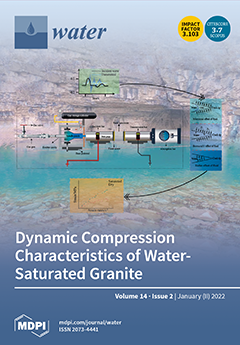Prediction of whole-plant short-term water use efficiency (WUE
s,P) is essential to indicate plant performance and facilitate comparison across different temporal and spatial scales. In this study, an isotope model was scaled up from the leaf to the whole-plant level, in order
[...] Read more.
Prediction of whole-plant short-term water use efficiency (WUE
s,P) is essential to indicate plant performance and facilitate comparison across different temporal and spatial scales. In this study, an isotope model was scaled up from the leaf to the whole-plant level, in order to simulate the variation in WUE
s,P in response to different CO
2 concentrations (
Ca; 400, 600, and 800 μmol·mol
−1) and soil water content (SWC; 35–100% of field capacity). For WUE
s,P modelling, leaf gas exchange information, plant respiration, and “unproductive” water loss were taken into account. Specifically, in shaping the expression of the WUE
s,P, we emphasized the role of both stomatal (
gsw) and mesophyll conductance (
gm). Simulations were compared with the measured results to check the model’s applicability. The verification showed that estimates of
gsw from the coupled photosynthesis (
Pn,L)-
gsw model accounting for the effect of soil water stress slightly outperformed the model neglecting the soil water status effect. The established coupled
Pn,L-
gm model also proved more effective in estimating
gm than the previously proposed model. Introducing the two diffusion control functions into the whole-plant model, the developed model for WUE
s,P effectively captured its response pattern to different
Ca and SWC conditions. Overall, this study confirmed that the accurate estimation of WUE
s,P requires an improved predictive accuracy of
gsw and
gm. These results have important implications for predicting how plants respond to climate change.
Full article





